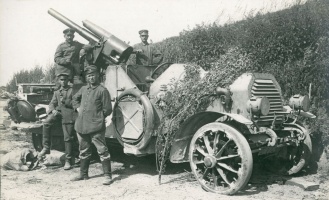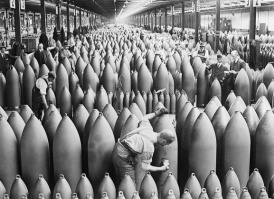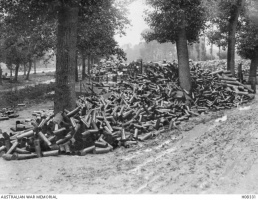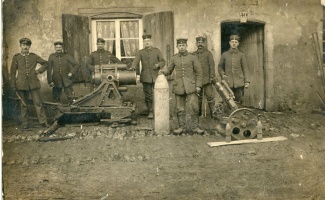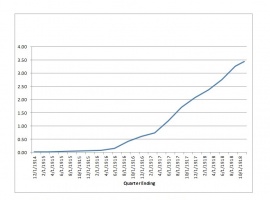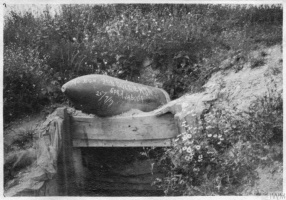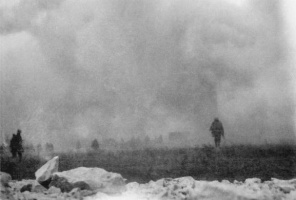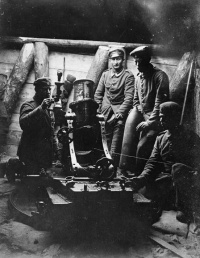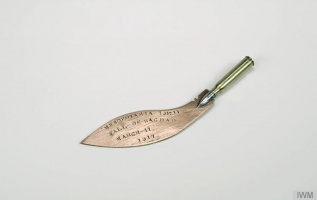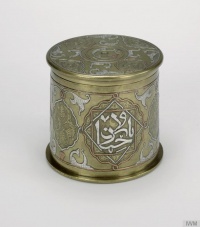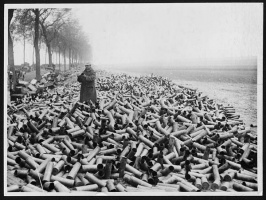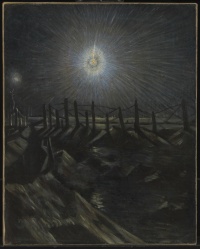Introduction↑
Shell types are divided into those fired from field artillery systems (guns and howitzers), and those fired from mortars.
Artillery Shells↑
Breech loading, rifled light field guns, generally from 37mm to 105mm in diameter, were fed with unitized ammunition, consisting of a shell, smokeless powder or cordite propellant, and primer loaded in a fixed metallic case. Field howitzers fired a lower velocity shell, generally from 150mm to 280mm in diameter, which were loaded separately from bagged or cased propellant.
Mortar Shells↑
Smoothbore, muzzle loaded Allied trench mortars used a fixed firing pin to ignite propellant in the base of a finned shell. The German army fielded the Minenwerfer, a muzzle loaded trench mortar with a rifled barrel and recoiling system like a field gun. Regardless of type, mortars used a less powerful propellant charge, which allowed for a thinner walled shell with a proportionally larger payload than artillery shells.
Shell Technology and Employment pre-1914↑
The most common type of shell fielded by the prewar Allied armies was shrapnel, a hollow steel projectile filled with metallic shot and a gunpowder bursting charge, exploded by a time fuse. Timed properly, shrapnel shells would cut through exposed enemy troops with an explosion of shot. The picric acid high explosive (HE) shell, employed principally for reducing fortifications through blast effect, was triggered by a time or impact fuse. Besides shrapnel, the German army produced unitary shells filled with a matrix of high explosives and shot. For their super-heavy siege artillery, over 280mm in diameter, the Germans and Austrians employed concrete piercing shells with a time-delay fuse, designed to penetrate and explode inside hostile reinforced concrete fortresses.
Advances in Shell Technology and Employment↑
Despite having sent observers to the Russo-Japanese War, the European armies were surprised to find their prewar shells, particularly shrapnel, were insufficient to destroy earthworks and cut wire obstacles. Attempts to use long bombardments to overcome shell limitations proved counterproductive, as the resulting craters and debris hindered the maneuvers of the infantry. In time, technical hurdles were overcome and gunners began receiving new generation HE rounds incorporating trinitrotoluene (TNT) fillers, better engineered shell casings, and instantaneous fuses – all greatly improving the blast and fragmentation effects on enemy fortifications and wire obstacles. The improvements in shell performance were matched with improvements in propellants and gun design that increased the range of guns and howitzers.
In mid-1916, France produced the first gas shells by filling explosive shell casings with irritant and chlorine payloads. Specialized gas shells were soon developed and sealed for safer handling. They incorporated thinner walls and a bursting charge for better dispersion. Advances in respirator technology led in turn to the development of deadlier phosgene derivatives. Germany went one step further by developing a sulfur mustard gas shell which was well suited for suppression and area denial employment. Later in the war, the Germans developed a unitary shell combining a high explosive and shrapnel matrix with a secondary mustard gas payload. By spring 1918, short but intense barrages of gas and HE shells were routinely employed to suppress hostile artillery positions, forward observers and command posts.
Two additional types of chemical shells were developed during the war, smoke and star shells. Smoke shells carried a chemical payload that would emit smoke after detonation, and were often employed with gas and HE shells to amplify suppressive effects on enemy artillery spotters and machine gunners. Star or illumination shells were exploded at a height by a time fuse and deployed a magnesium flare suspended from a small parachute, which cast a strong light on the nighttime battlefield.
Legacy↑
Before August 1914, artillery was viewed as a useful adjunct to the decisive infantry and cavalry arms. After the start of the world war, the artillery arm established its primacy on the battlefield, forcing a fundamental change in the tactics of the time. Major improvements in tactics and technology ensured the dominance of the artillery arm throughout the war. At the end of the war, statistics indicated that artillery shells were the greatest source of injury and death on the world war battlefields. In World War II, the widespread use of armored fighting vehicles (AFV), close air support and motorization mitigated the effects of hostile artillery fire by restoring mobility to the battlefield.
Millions of shells were fired during the Great War, thus creating vast dumps of discarded shell casings, which were commonly reused to create trench art. The reworked cases often incorporated details of the soldier’s wartime service, and surviving examples offer a unique insight into the material culture of the war.
Harold Allen Skinner Jr., United States Army Reserve
Section Editor: Mark E. Grotelueschen
Selected Bibliography
- Bailey, Jonathan B. A.: Field artillery and firepower, Annapolis 2004: Naval Institute Press.
- Clarke, Dale / Delf, Brian: British artillery 1914-19. Heavy artillery, Oxford 2005: Osprey.
- Cron, Hermann: Imperial German Army, 1914-18. Organisation, structure, orders of battle, Solihull 2002: Helion.
- Grotelueschen, Mark E.: Doctrine under trial. American artillery employment in World War I, Westport 2001: Greenwood Press.
- Gudmundsson, Bruce I.: On artillery, Westport 1993: Praeger.
- Linnenkohl, Hans: Vom Einzelschuss zur Feuerwalze. Der Wettlauf zwischen Technik und Taktik im Ersten Weltkrieg, Koblenz 1990: Bernard & Graefe.





